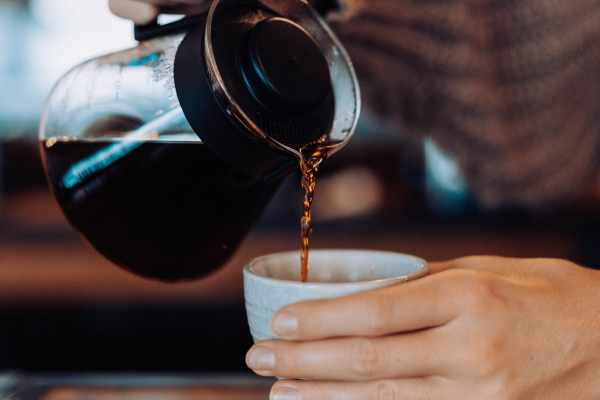For many coffee lovers, the ideal cup of coffee isn’t found in a café—it’s brewed right in their own kitchen. But achieving that rich, aromatic, and flavorful cup consistently at home requires more than just good beans. It’s about understanding the brewing process and using the right techniques every step of the way.
In this article, you’ll learn how to make the perfect cup of coffee at home, with tips on water quality, grind size, brewing methods, and more.
Start with Fresh, Quality Coffee Beans
The foundation of great coffee is great beans. Always choose freshly roasted, high-quality whole beans. Look for beans that:
- Are roasted within the last 2–4 weeks
- Come in a sealed bag with a degassing valve
- Are labeled with origin, roast level, and tasting notes
Whole beans retain their flavor much longer than pre-ground coffee. If possible, purchase from a local roaster or specialty coffee supplier for peak freshness.
Use the Right Grinder and Grind Size
Grinding your coffee just before brewing is one of the most impactful things you can do to improve flavor. The grind size should match your brewing method:
- Espresso: Extra fine
- Aeropress: Fine to medium-fine
- Drip machine: Medium
- Pour-over (V60, Chemex): Medium-fine
- French press: Coarse
- Cold brew: Extra coarse
A burr grinder is recommended over a blade grinder, as it provides a more consistent grind, which leads to better extraction and a balanced cup.
Measure Your Coffee and Water Accurately
Precision matters when making coffee. A kitchen scale is a valuable tool to ensure the correct coffee-to-water ratio. The general guideline is:
- 1 gram of coffee per 15 to 18 grams of water
That means for one standard 8 oz (240 ml) cup of coffee, you’ll use around 13 to 16 grams of coffee.
Adjust this ratio to taste. If your coffee is too weak, use more grounds. If it’s too strong or bitter, use slightly less or change the grind size.
Use Filtered Water at the Right Temperature
Water makes up over 98% of your coffee, so its quality has a major effect on taste. Use clean, filtered water with no strong odor or taste. Avoid distilled water, as it lacks minerals needed for proper extraction.
The optimal brewing temperature is between 90°C and 96°C (195°F to 205°F). If you don’t have a thermometer, bring water to a boil and let it sit for 30 seconds before pouring.
Choose the Best Brewing Method for You
Different brewing methods bring out different flavors from the same beans. Here are a few popular options:
Pour-Over (V60, Chemex)
- Offers control over flow rate and extraction
- Produces a clean, bright cup with distinct flavor notes
- Ideal for single-origin beans and light roasts
French Press
- Full-bodied and rich, with more oils and sediment
- Great for dark roasts and those who enjoy a robust flavor
- Steep for 4 minutes and plunge slowly
Drip Coffee Maker
- Convenient and consistent
- Best with medium-roast, medium-grind coffee
- Clean regularly to prevent buildup and off-flavors
AeroPress
- Versatile and portable
- Makes a concentrated brew, similar to espresso
- Quick and easy cleanup
Espresso Machine
- Produces a concentrated shot with crema
- Requires fine grind, precise tamping, and practice
- Ideal for lattes, cappuccinos, and strong coffee lovers
Cold Brew
- Steep coffee grounds in cold water for 12–18 hours
- Smooth, low-acid, and easy to store
- Serve over ice or mix with milk
Preheat Your Equipment
To maintain temperature stability during brewing, preheat your coffee maker, mug, and carafe with hot water. This simple step helps prevent rapid cooling and ensures better extraction.
Don’t Forget the Bloom
When brewing with methods like pour-over or French press, pour a small amount of hot water over the grounds and let them sit for 30 to 45 seconds before completing the brew. This “bloom” releases CO₂ trapped in freshly roasted beans and allows water to penetrate evenly.
Keep Your Equipment Clean
Old coffee oils and residue can quickly ruin the flavor of your brew. Clean all parts of your coffee equipment regularly, including:
- Grinders (brush or vacuum out old grounds)
- Carafes and filter baskets
- Reusable filters
- Espresso machine parts
Use a descaling solution every few months if you use hard water.
Experiment and Adjust
The perfect cup is subjective, and small adjustments can lead to better results. Try changing:
- Grind size
- Coffee-to-water ratio
- Brewing time
- Water temperature
- Roast level or origin
Take notes on what works and what doesn’t. Over time, you’ll dial in a method that fits your taste preferences perfectly.
Final Thoughts: Master Your Morning Brew
Making the perfect cup of coffee at home isn’t complicated, but it does require care and consistency. By focusing on bean quality, grind size, water temperature, and brewing method, you’ll be well on your way to mastering the art of home brewing.
Whether you love the clarity of pour-over or the richness of French press, the tools and techniques are all within reach. With a little practice, your home-brewed coffee can rival (or even surpass) your favorite café’s.
So start fresh, grind right, and enjoy the process—your perfect cup awaits.

